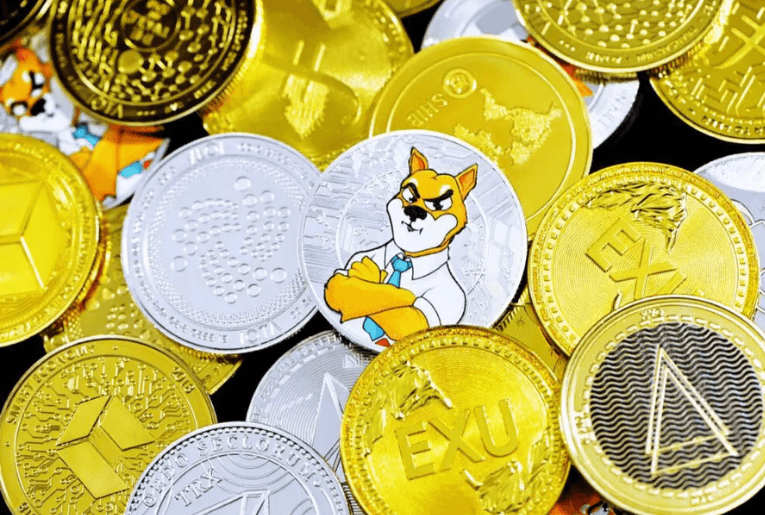While numerous crypto-financial backers mine to acquire resources, there is another choice accessible to certain financial backers: Crypto staking.
Crypto staking includes “securing” a part of your cryptocurrency for a while as a method of adding to a blockchain network. In return, stakers can acquire rewards, normally as extra coins or tokens.
What is crypto staking?
Crypto staking is like storing cash in a bank, in that a financial backer secures their resources, and in return, acquires rewards, or “interest.”
“Staking is a term used to allude to the assigning of a specific number of tokens to the administration model of the blockchain and along these lines keeping them unavailable for general use for a predefined timeframe,” says Nicole DeCicco, the proprietor, and originator of CryptoConsultz, a cryptocurrency consultancy in the Portland, Oregon region.
A specific organization’s convention secures a financial backer’s holdings – like storing cash in a bank, and making a deal to avoid pulling out it for a set time frame period, which helps the organization in several different ways, as per DeCicco.
To begin with, this can build the worth of a token by restricting the stock. Second, the tokens can be utilized to oversee the blockchain if the organization utilizes a proof-of-stake (PoS) framework. A PoS framework – instead of a proof-of-work (PoW) one, which fuses “mining” – can be genuinely muddled, particularly for crypto rookies.
Also Read:
In PoS frameworks, coins are staked to produce new squares in the blockchain, for which members are compensated. “Victors are chosen through randomization, guaranteeing no single substance will acquire a restraining infrastructure over manufacturing,” says DeCicco.
The cycle is streamlined for crypto trade clients, says Jeremy Welch, boss item official at Kraken, one such crypto trade. On Kraken, Welch says staking is just about as simple as “going to the staking page [on the client’s interface], indicating the sum you need to stake, and hitting submit.”
A quick tip: The potential rewards you can harvest from staking are straightforwardly affected by the amount you’re willing to put at, all things considered, stake. Remember that when choosing which level of your holdings that you stake or agent to a staking pool.
Coins you can stake
While only one out of every odd cryptocurrency can be staked, most can. For example, DeCicco says that seven of the ten most well-known current coins can be staked. Here are a few models:
Ethereum, Cardano, Solana. Bitcoin is not included in staking suggestions.
Staking rewards
There are many advantages and rewards to staking. Here are probably the most unmistakable:
Procure extra tokens. This is the enormous one – expanding your singular reserve of tokens or coins. Stakers aren’t ensured anything, as the method involved with fashioning new squares and giving out rewards is randomized, however, stakers do “acquire interest,” in a manner of speaking, by staking.
Staking is less asset escalated. Instead of crypto mining, staking devours far fewer assets, which might assist you with dozing around evening time. Additionally, staking is “adjusting the environment by making tokens more uncommon,” says DeCicco, which can build the worth of your holdings.
Stakers get casting ballot rights and investment. As referenced, stakers are more settled in a particular biological system or blockchain network, which might give them more clout regarding what occurs next with a particular cryptocurrency. “It’s like possessing stock in an organization. By staking, you’re getting casting voting rights,” says Welch.
Staking can be a simple way of developing holdings. For financial backers utilizing a trade, staking can be pretty much as simple as flipping a couple of changes to set things up. From that point, they can watch their holdings develop. It’s a hands-off, simple way of continuing contributing, while at the same time investing almost no energy.
Dangers of staking
Similarly, as with speculation, staking has its dangers. While it’s far-fetched that you’ll see your whole record go kaputz short-term, as may occur with specific stocks, there are a few things to know about before you begin staking:
Crypto is unstable. As a matter of first importance, cryptocurrency is unstable speculation, and all things considered, value swings are normal. The unstable idea of crypto and relating value swings can make them reevaluate your methodology consistently – thus, unpredictability is something to remember.
Lock-up periods. Staking includes securing your assets for a while, and if you lock up your holdings for quite a long time (or a long time), you will not approach them for quite a while. Additionally significant: There may not be a way to “unstake” your holdings once you start.
Be careful with “slicing.” If you’re staking outside of a trade, by setting up and arranging your own hub, you might commit an error and bring about punishments. This is classified as “cutting,” and is utilized against “validators that are performing inadequately or insincerely,” says Welch. The outcome? “A part of the assets can be taken as a punishment,” he adds.
Charges. Indeed, there are charges related to staking, especially on the off chance that you do as such through a trade. The charges shift by trade, however, Welch says they’re commonly a level of a staker’s rewards.
Source: https://www.businessinsider.in/cryptocurrency/news/what-to-know-about-staking-the-process-of-locking-up-crypto-holdings-to-earn-rewards-and-interest/articleshow/86413783.cms

